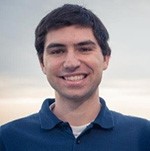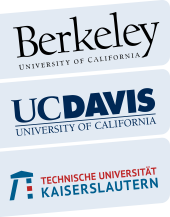

RESEARCH PROGRAM
Title: Numerical Modeling of Laser Additive Manufacturing Processes
Name: Marc Russell
(former student)
Project description:
Starting situation
Advances in the manufacturing field in recent years have been lead by the development of novel additive manufacturing techniques. These novel additive techniques include a wide range of processes in which parts are manufactured layer-by-layer through the deposition of solid material particles that are melted together via a laser source. The quality of the final product is highly dependent on the interplay of various physical and material phenomena. It is of great importance to industry to understand these interactions to improve the manufacturing process especially with respect to minimizing residual stresses in the microstructure. The complexity of such a problem lends itself to the use of numerical experimental methods.
Approach
A coupled two stage numerical model will be designed and implemented to simulate laser-deposition the process at the microscale. A Discrete Element Method (DEM) scheme will be used to simulate the deposition and laser heating of particulate materials. A Finite Difference continuum model will be used to simulate the coupled thermal-mechanical fields in the cooling deposited material. Some form of coupling scheme will be used to connect the two models together. An optimization algorithm can be applied to find the optimal process parameters.
Expected Results
A fast, robust, high-fidelity numerical model of a laser deposition process will be developed. The model will enable industry to optimize input parameters for laser deposition processes.
Such processes will advance the field of manufacturing by (a) allowing for the creation of novel materials through precise material deposition, (b) allowing engineers to create previously impossible designs, e.g. where concavity of the profile would prohibit the use of traditional machinery, (c) creating complicated parts faster and cheaper, and (d) eliminating manufacturing waste.

